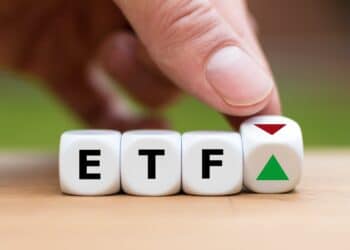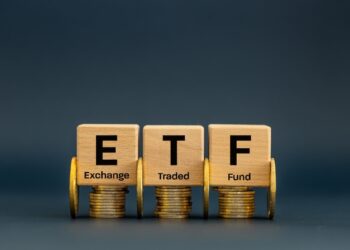Investment bonds can be an effective strategy for those subject to marginal tax rates greater than 30 per cent, David Barrett writes.
Whilst the Federal Government’s 2017 Budget tried its hand on housing affordability, looked to reign in the federal government’s spending on tertiary education, and looked to have the major banks and large multinationals fund a raft of spending promises through new and increased taxes, there was still plenty in it that will allow financial planners to help their clients navigate the new measures targeted in the budget.
The reduced non-concessional contribution cap of $300,000 over a three-year period from 1 July 2017 limits superannuation as an option for large financial windfalls. As a result, many financial services professionals are seeking alternatives to superannuation for clients with significant sums to invest.
Life insurance and friendly society bonds (investment bonds) warrant consideration in this context, given the underlying tax on earnings is based on the corporate tax rate, currently 30 per cent.
When considering investment structure alternatives, the expected gross earning assumptions and a client’s marginal tax rate (and/or that of their spouse) are useful starting points.
Projection rate assumptions and marginal tax rates
Assume that the underlying investment is a balanced portfolio of diversified assets in six asset classes: cash, Australian fixed interest, international fixed interest, Australian equities, international equities and property.
The after-fees illustrative projection rate for the portfolio is 6.7 per cent per annum, comprised of 3.3 per cent income (including imputation credits) and 3.4 per cent capital growth (assuming 20 per cent turnover of assets per annum). Refer to the Projection Rate Assumptions on page 34 for further details.
Chart 1 shows the after-tax return for various marginal tax rates (MTRs) based on the after-fees illustrative projection rate above, assuming capital gains tax (CGT) discounts apply (50 per cent in personal name, 33 and 1/3 per cent in superannuation and nil for corporate entities).
Example: Billie
Consider an investment of $100,000 over 20 years by Billie, whose taxable income exceeds $87,000 but is less than $180,000 – her marginal tax rate is 39 per cent including Medicare.
If Billie invested in her personal name, $100,000 would grow to approximately $258,000 in 20 years, compared to $316,000 in superannuation accumulation, which is $58,000 more. In today’s dollar terms (assuming an inflation rate of 2.5 per cent per annum) Billie’s investment will be valued at either $158,000 (in personal name) or $193,000 (in super).
Investment bonds
The earnings on investment bonds are taxed within the bond, prior to redemption, at the corporate tax rate of 30 per cent. If an investment bond is held for 10 years or more, the net earnings (after having paid tax at the corporate rate) are not subject to any further tax when received by the bond owner. So, the overall rate of tax paid on earnings is 30 per cent.
This may appear attractive compared to the personal marginal tax rates of 34.5, 39 and 47 per cent. However, CGT discounts don’t apply to capital gains realised within an investment bond structure, so the after-tax return rate is reduced.
Chart 1 shows that the after-tax return of an investment bond would be 4.8 per cent per annum if the after-fees illustrative projection rate is 6.7 per cent per annum. This result is preferred only to personal investment at the top personal marginal tax rate (after-tax return of 4.5 per cent per annum), so an investment bond would appeal only to those with taxable income of $180,000 or more. A better result will be achieved by investing in a client’s personal name at all other marginal tax rates.
Example: Billie (continued)
If Billie invested $100,000 in an investment bond subject to the same pre-tax returns as described above (6.7 per cent per annum) it would accrue to $255,000 after 20 years, equivalent to $155,000 in today’s dollars.
The outcomes for the personal investment and investment bond options are shown in Table 1.
Note that it has been proposed to reduce the corporate tax rate to 25 per cent by 1 July 2026 for all corporate entities. An amending bill is currently before Parliament which had not been passed at the time of writing. For larger entities (aggregate turnover of more than $1 billion), the reduction from 30 per cent will begin to occur from 1 July 2023, if the proposed legislation becomes law.
Investment bonds will become relatively more attractive if the corporate tax rate reduces to 25 per cent. The after-tax return of the investment bond described above would be 5.1 per cent per annum (refer Chart 1) if the after-fees illustrative projection rate is 6.7 per cent per annum.
This is a better outcome than investing personally at Billie’s marginal tax rate of 39 per cent, and also exceeds the outcome if her marginal tax rate was 34.5 per cent. Based on the return assumptions used here (see Projection Rate Assumptions), investment bonds would appeal to clients with taxable income of $37,000 or more.
In summary, until the proposed corporate tax rate reductions occur (if they do), investment bonds for a ‘whole of portfolio’ approach (based on the stated return assumptions) are attractive if the only alternative is investing personally where the top marginal rate (47 per cent) applies.
Split portfolios
The attractiveness of investment bonds is reduced by the absence of any CGT discounts. The absence of CGT discounts is less important if the underlying assets are predominantly income producing, such as cash and fixed interest securities (‘defensive assets’).
It follows that structuring defensive assets in an investment bond and growth assets in personal name, where the 50 per cent CGT discount may apply, may be an effective strategy.
The balanced portfolio described above comprises 35 per cent defensive assets (cash and fixed interest) and 65 per cent growth assets (Australian and international equities and property). Splitting these into the separate structures, that is the defensive assets into an investment bond (corporate tax rate 30 per cent) and the growth assets into personal name (marginal tax rate 39 per cent), would result in an after-tax return of 5.2 per cent per annum over 20 years if the after-fees illustrative projection rate was 6.7 per cent per annum.
Example: Billie (continued)
Consider an investment of $100,000 over 20 years by Billie whose taxable income exceeds $87,000 but is less than $180,000 – her marginal tax rate is 39 per cent including Medicare.
The outcomes over 20 years in both future values and today’s dollar term for three investment options (personal name, whole of portfolio investment bond, and a split portfolio as described above) are shown in Table 2.
The split portfolio is the most favourable outcome for Billie. Interestingly it produces a better result than investment in personal name where the 34.5 per cent (including the Medicare levy) marginal tax rate applies (taxable income in the range $37,000-$87,000).
Furthermore, this outcome is consistent when varying the return assumptions upwards and downwards by one per cent per annum.
Summary
There are pros and cons in using investment bonds over a 10-year period, or longer. The loss of any capital gains discount is a deterring factor.
However, using investment bonds for predominantly income producing assets can be an effective strategy for those subject to marginal tax rates greater than 30 per cent.
Furthermore, if the corporate tax rate is reduced from 30 per cent, the relative appeal of investment bonds will increase further.
Note that in this article there has been no consideration of the tax implications of redeeming an investment bond within the first 10 years, or the effectiveness of investment bonds used for education purposes. These are topics for another day.
Projection Rate Assumptions
The after-fees pre-tax projection rate of 6.7 per cent per annum used in this article is based on the asset class weightings, long-term income and capital growth projection rates and other assumptions in the table below.
These rates aren’t guaranteed, are provided as an illustration only, and may vary from actual results. The projection rates aren’t intended to be and shouldn’t be relied on when making a decision about a particular financial product. Before making any financial decisions, you should seek personal financial advice from an Australian financial services licensee.
David Barrett is head of Macquarie Technical Services.





